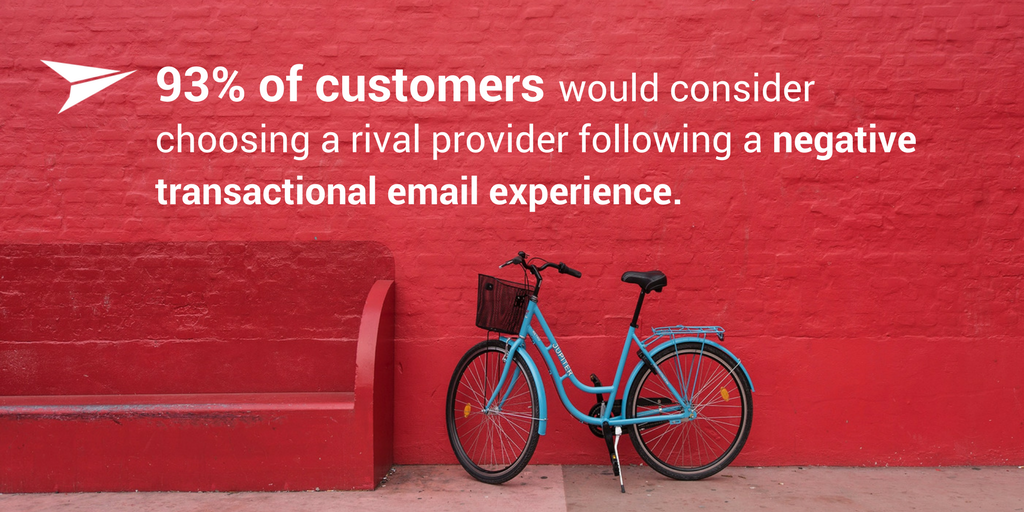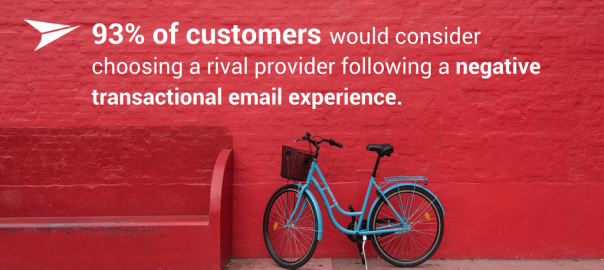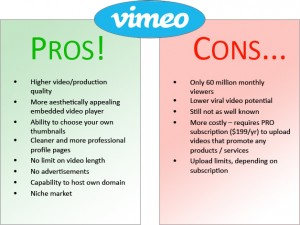— November 1, 2017
All businesses are guilty of it, focusing daily on acquiring new customers, ensuring they convert with their brand and not with a rival company… and then forgetting about them, until it’s time to lure them into making another purchase. But, after the conversion, what do we do? In the age where consumer expectations are high, companies cannot afford to sit back and relax. The hard work starts now: it’s time to think about customer retention and the transactional email experience.
Before we look at what your customers could be looking for in transactional emails, let’s look at what they don’t want. In our recent research study, we found that 93% of consumers would consider choosing a rival brand following a negative transactional email experience.

So, what aspect would lead to a dissatisfactory interaction? Fear not, we asked that too.
- Spelling, grammar and language mistakes.
- Emails that contained sensitive information.
- Emails that don’t visually look like a brand’s website.
- Emails that took a long time to arrive in the inbox.
- Emails that reached the SPAM box, rather than the inbox.
- Emails that got categorized by Gmail as a ‘promotion’ or not a focused email by Outlook.
With this in mind, let’s look at how to combat the situation and give your customers what they’re craving.
What do customers want, when it comes to transactional emails?
1. Emails that match a brand’s website design
The first challenge is that, typically, in a lot of organizations transactional emails are managed by the Technical Team, whereas marketing emails are managed by (you guessed it) the Marketing Team. And this is why sometimes there is a disconnect between the look and feel of transactional emails, compared to marketing emails.
Marketers that focus on customer retention need to collaborate with their technical counterparts to ensure the email experience is seamless. As 12% of consumers say transactional emails that match a brand’s website is the most important aspect of the journey.
2. Speed of email delivery
The second challenge is the time it takes after a customer has performed an action for an email to appear in the user’s inbox. We already know that consumers are impatient, and 24% say that the speed in which they receive transactional emails is the most important aspect of the interaction with a brand. But how impatient are consumers, when it comes to transactional emails? 41% get annoyed after 60 seconds if they haven’t received the email confirming their recent action.
Knowing the short time frame in which our email recipients get frustrated, how can we minimize the impact? Brands can monitor and rectify issues on their own end, to limit the risk of revenue and business operational impact with features like Real-Time Monitoring, enabling you to flag and resolve communication anomalies. So, if your email routing slows, Real-Time Monitoring can be there to limit the risk, by helping you address the situation quicker.
3. Emails that are easy to navigate
Next up is how easy the experience is for the customer. 28% of consumers crave emails in which they can easily find the message they are looking for, or the information you need to provide them with to enhance the journey. Ensure your emails are readable and simple to navigate. You could do this by only providing the information needed at that stage, and following up with a series of emails that offer additional details.
4. Multiple emails that update the user at each stage
We found that 36% of consumers are looking to be kept informed during the interaction, with updates at every stage of the experience. Some ecommerce retailers get this right with their post-purchase lifecycle, sending emails to confirm the order, dispatch and delivery.
But, what can other industries learn from this? What steps could you break your experience down too? Events and entertainment companies can deploy the same logic to their events if they are issuing tickets, and go one step further by offering helpful tips and suggestions throughout the customer journey. Similarly, so can travel companies, as creating customer satisfaction is imperative to a repeat booking. Financial services companies could also adopt this; for example, banks could advise companies when their credit card statement is due, paid or even when the limit is reached.
Let’s sum this up…
With 93% of consumers being prepared to consider reevaluating their chosen brands following a negative transactional email experience, it’s safe to say that these business critical emails are imperative for true customer loyalty.
So what are the six steps you should take to ensure you’re getting these emails right?
- Ensure there are no spelling or grammar mistakes.
- Don’t include sensitive data.
- Give your emails the same design look and feel as your website.
- Create emails that are easy to navigate.
- Monitor sending anomalies for slow sending speeds and delivery issues.
- Consider breaking your email down into a sequence of emails.
So, what are you waiting for? Let’s make your transactional emails great again!
Have you already implemented these tips? Or is your transactional experience the best out there?
Digital & Social Articles on Business 2 Community
(150)
Report Post







